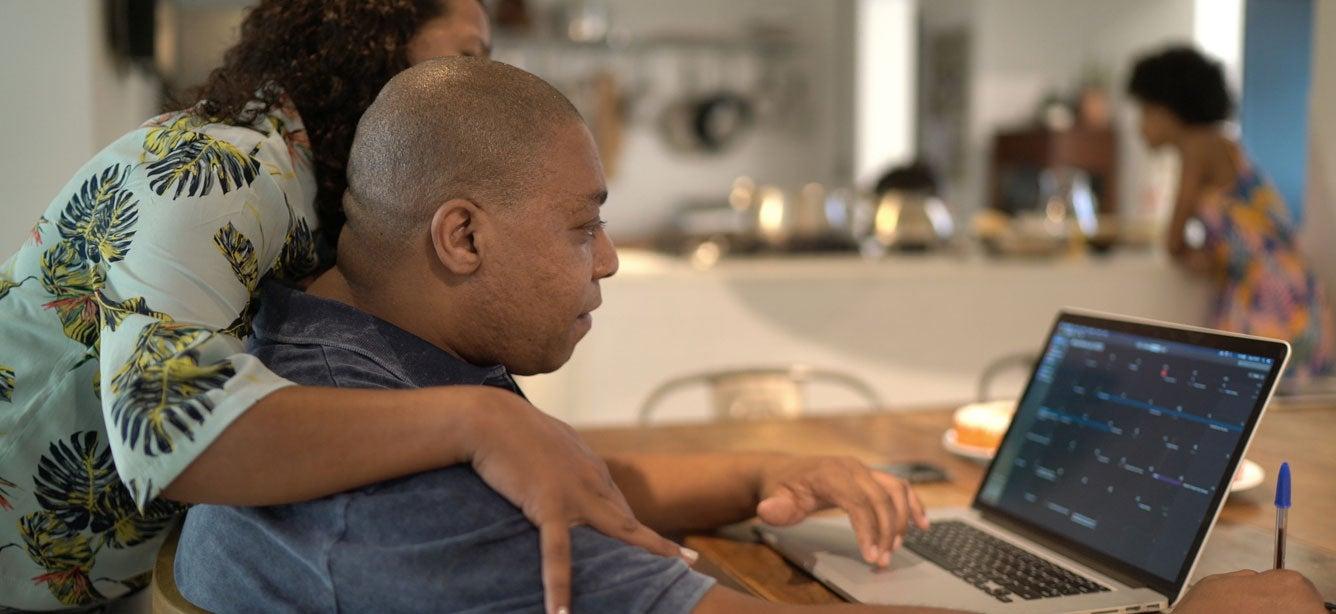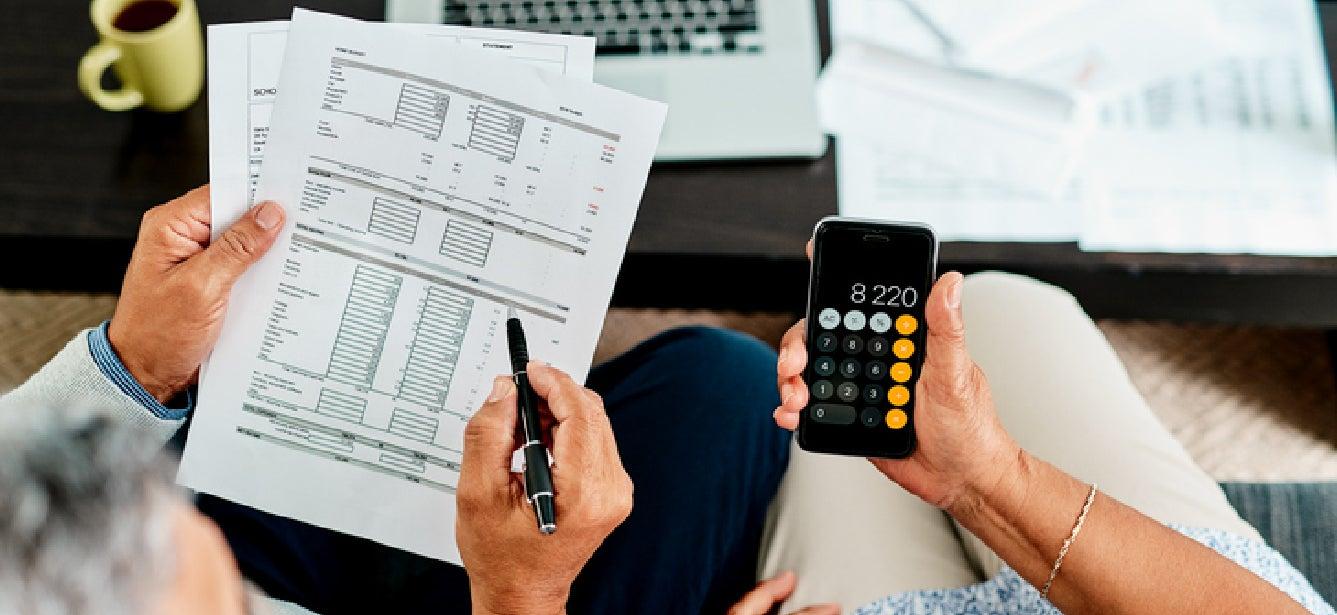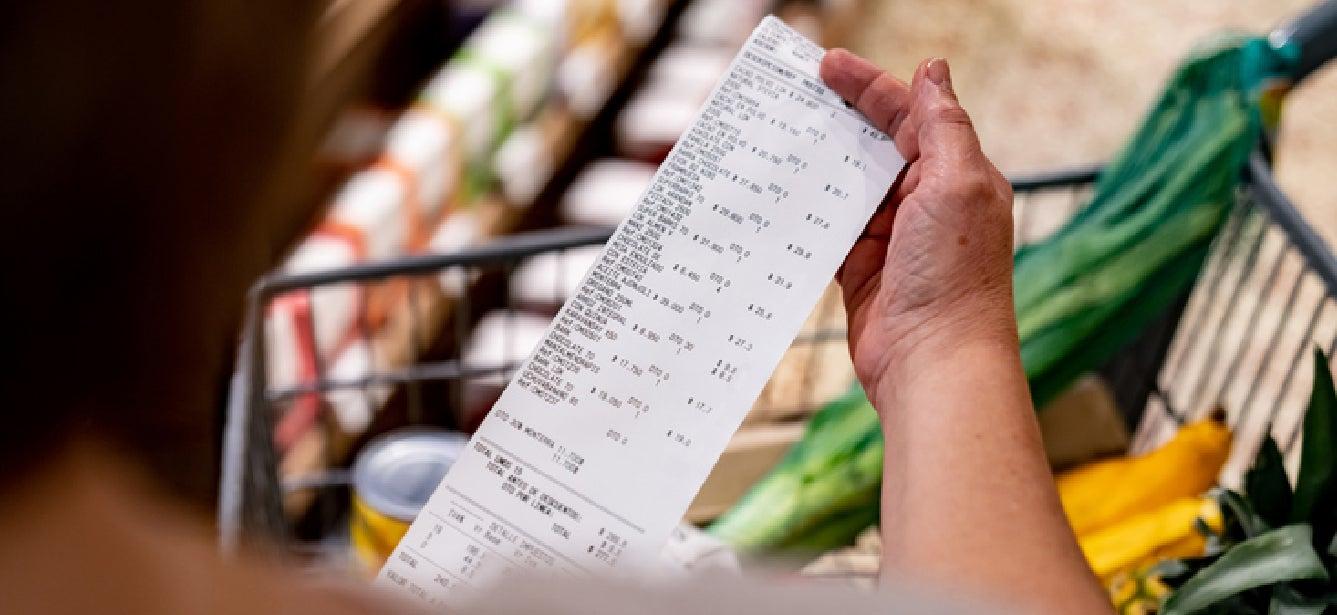
Related Topics
Even if you don’t know it by name, chances are high that you’ve heard about the “envelope system” of money budgeting. This low-tech approach to money and debt management is one of several strategies you can use to track your spending and gain better control over your finances.
In this article, you will learn:
- What envelope budgeting is
- How envelope budgeting works
- Who should use envelope budgeting
- Why envelope budgeting is a good idea for seniors
- Where to begin with envelope budgeting
What is the envelope budgeting system? And how does it work?
The idea behind envelope budgeting is simple: it relies on using cold, hard cash to manage your spending and savings.
In this approach, you liquidate your monthly income, then physically divide it into individual envelopes that represent specific types of expenses. (Liquidating your income means cashing your checks at the bank or withdrawing their value from an ATM.)
Once you spend the money in each envelope, it’s spent. You can’t add to it, and you certainly can’t subtract from it when the envelope is empty. However, if you have anything left at the end of the month, you get to decide whether to carry it over into the same envelope the next month, re-allocate it to a different one, or put it into savings.
Who should use the envelope system?
Because it’s easy to learn, the envelope system can be a useful budgeting method for beginners of all ages—as well as for those who aren’t comfortable using spreadsheets, online banking tools, mobile apps, or other technologies to help them make and stick to a budget.
Even if you’re a budget pro, a cash-based system can prove surprisingly helpful in certain situations. If you tend to overspend on purchases when you use a credit card, for example, forcing yourself to use cash can keep you honest.
“With the envelope system, your money is truly real,” said Jessica Johnston, NCOA's Senior Director for the Center for Economic Well-Being. “Unlike with credit and debit cards, you actually see and touch your dollars—which encourages accountability. And when you watch the thickness of your envelopes change in real time, you are more likely to think strategically about your spending decisions. ‘Do I truly need this? Or is it something that I want but can live without?’”
Why should older adults use the envelope method of money budgeting?
According to data compiled by the U.S. Federal Reserve, 93 percent of people over age 60 own at least one credit card.1 And credit cards can easily lead to unintended financial consequences for many older adults who live on fixed incomes—as 72-year-old Franklin learned.
On the one hand, the convenience of credit cards—combined with the cashback awards, travel credits, and other perks that many of them offer—make them an attractive choice for recurring payments and purchases. On the other, unless you’re someone who is disciplined about their use—someone who keeps close tabs on every spending transaction and regularly compares your credit card balance(s) against your available monthly income and the other bills you need to pay—you may want to consider using a cash-based system. Especially, advised NCOA's Johnston, if you currently carry credit card debt that you’re not sure you can pay down.
“Envelope budgeting means you won’t be adding to that debt moving forward,” she said.
And once you start using this method, you may be able to save some money when you couldn’t before—money you can then put toward your credit card balances,” Johnston said.
Finally, some older adults may simply feel more comfortable using cash. In an age of relentless financial scams targeted at seniors, cash can offer some protection against loss—provided you don’t carry large sums of it around.
“What we don’t advise,” says Johnston, “is that anyone keep their life savings in cash. That should remain in an account at your trusted financial institution, where you can’t misplace the envelope it’s in.”
I’m ready to try envelope budgeting. Where do I begin?
First things first: you will need to have a clear understanding of your monthly income and expenses—both fixed and variable. Find tips on how to get there in How to Budget Your Money: A Guide for Older Adults (see the section "What Do I Nedd to do to Get Started?").
Next, follow these steps:
1. Create clear categories for your spending.
Start with your fixed expenses—the things that don’t change much, if at all, each month: your mortgage or rent payment, insurance premiums, and utility costs.
Then, define your variable and discretionary expenses. Be intentional. Instead of lumping several things under “miscellaneous,” for example, try separating them into their own categories. These can include:
- Entertainment
- Car repairs
- Clothing
- Gifts
- Cash donations
2. Gather your envelopes and label them.
If you already write a check to cover your fixed expenses, or use automatic withdrawal through your bank, you don’t need to change that process. Instead, focus on your variable expenses when setting up your envelopes. Label each envelope with your category name and how much money you’ve budgeted for it.
3. Allocate your dollars.
Cash out your monthly sources of income, such as your Social Security check, and physically divide the money into the categories you’ve defined.
4. Spend your cash.
Every time you need to cover an expense, take the money from its corresponding envelope. Then, write down what you spend on the back of the envelope so you know what you’ve already used and can easily see what you have left at any given time.
5. Be ruthless!
Don’t spend more than you have—plain and simple. If you budget $100 for restaurant meals and splurge on a $100 birthday dinner at the beginning of the month, that’s it. If you’re tempted to “borrow” money from another envelope, try to resist.
“The key to making this system work, and to forming healthy money management habits, is discipline,” NCOA's Johnston said. Look for patterns; if you consistently blow through the money in a particular envelope long before month’s end, you may need to adjust how and where you allocate your cash.
Conversely, you may find that you don’t spend everything you’ve budgeted in one or more categories. If so, you might even consider starting a second envelope system—this one, for accumulating savings that you can use for specific discretionary purposes. Simply follow the same steps as you would when budgeting your expenses—you’ll label your envelopes with your financial goals instead.
Adding it all up: Is envelope budgeting right for you?
If you’re still not sure, consider these pros:
✅ It’s easy to learn
✅ It doesn’t require technology
✅ It encourages accountability
✅ It helps you avoid overspending
And if you think it isn't, perhaps you're identifying with these cons:
❌ It can be time-consuming to manage
❌ It doesn’t provide cash back or other rewards
❌ It isn’t foolproof (you may forget to record every expense)
Depending on your individual situation, the envelope system of budgeting can be a great way to track your expenses, set savings goals, and gain better control over your spending habits. Even if you decide not to use it over the long term, envelope budgeting can help pour the foundation for a more disciplined approach to money and debt management—which can lead to greater financial security now—and well into your retirement years.
Source
1. U.S. Federal Reserve. Survey of Household Economics and Decisionmaking (2021). Found on the internet at https://www.federalreserve.gov/consumerscommunities/shed_data.htm





